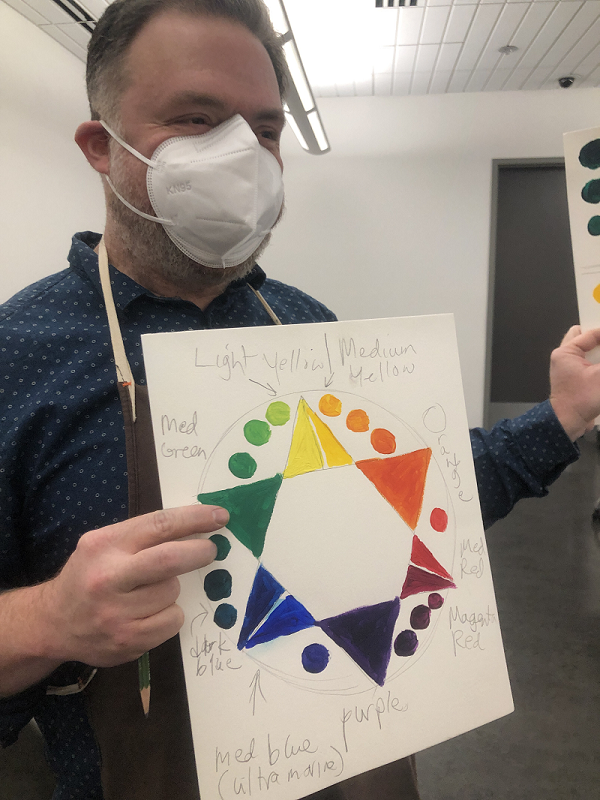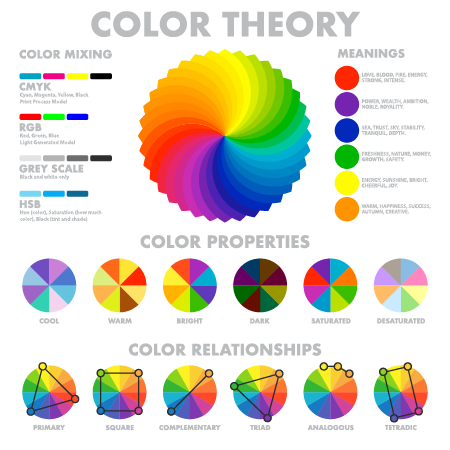The Art & Science of Color

Have you ever seen a color combination that made you say “WOW!”? Maybe it's beautiful clothing, a wacky house down the street, or a gorgeous bird. Color is everywhere. It has a unique way of evoking emotions and can influence people's behavior, too.
What is Color Theory?
Color theory focuses on mixing colors, color combinations and the effects. Artists, psychologists, scientists, and designers take the study of color seriously. There was research done in the 1970’s that concluded pink has a calming effect on angry people and so it became a trend to paint prison cells pink, for decades, to the present day (that research was later debunked!).
(Right: Art Instructor Peter Barth teaching about color, photo by Bob Hereford)
The Color Wheel
The color wheel is a helpful tool often used by artists and designers. Many people trace its origins to Issac Newton, an English mathematician who studied light and prisms, mapping colors to a circle in the 1660s. Many people around the globe have studied light and color for millennia, coming up with variations on the color wheel and other tools to think about color.
There is a science to color, for example, how it is derived from light, how it is perceived by the eye and brain, and how pigments are made. Yet it is also subjective, personal, and cultural. While there are no right and wrong ways to think about color, many people use the following guidelines to combine colors.

- Colors opposite on the wheel are complementary colors. They are high contrast and when used together they appear bright and prominent.
- Analogous colors are side by side on the color wheel. They are less intense than complementary colors. People often use three and choose one as the dominant color, and the two others as accents.
- Triadic colors are evenly spaced across the color wheel. This is a high contrast color scheme, but less so than complementary colors, making it more versatile. Together, these three are bold and vibrant.
- Warm colors are the colors from red to yellow, while cool colors are blue to green to purple.
- All physical colors, such as paint and pigments, can be derived from just three primary colors: red, blue, and yellow. Combining them gives you purple (red + blue), green (yellow + blue) and orange (red + yellow).
- Colors on the computer are based in light. Digital designers think in terms of a different color wheel, based on light shining through the screen, and that is red, green and blue, RGB. When added together they create white.
Resources
We enjoyed these colorful articles and information while researching this article:
Color Combinations Cheat Sheet by Oberlo
The Science of Color by Smithsonian Libraries
Lucky Colors in China by China Highlights
Colors of Africa by Design Indaba
Color Meanings and Symbolism by Canva
How Colors Affect the Way You think by BBC
Color in Your Life
Final questions to ask about color. Do you like it? Does it give the affect you’re going for? Great! That’s as good a rule as any to use when choosing colors.
If you want to immerse yourself in color, check out our art and design classes.

Blog article by Liza Burke - March 3, 2023